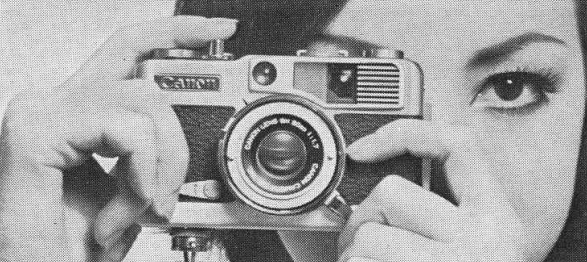What is an autographic camera?
If you've ever browsed through the camera section of a good antique shop, or better yet the antique camera section on a site like ebay, it's possible you've come across a camera or a listing with the words "autographic" somewhere in it. Did you ever wonder what this actually meant? It's not immediately obvious from looking at a camera or from reading most online auction listings, but autographic cameras were a category of cameras manufactured and sold by Kodak in the early days of the twentieth century that, in combination with a special film, allowed the photographer to write notes directly in the side margins of the exposed film at the time of shooting, all without damaging or ruining the photo by exposing it to light.
Kodak writes a brief but informative description of Autographic cameras in the following article, originally printed in an early edition of Kodak's How to make Good Pictures, a cheap photography book that was sold in various revisions and editions for probably at least 50 years. While Kodak claims that the Autographic camera and film were essentially a remarkable innovation in photography, autographic film was discontinued in 1932, only eighteen years after it's introduction in 1914. As a side note, if anyone reading this has come across any inventive person producing and selling new autographic film in size 127, please get in contact with me as I'd love to try it out in my Kodak Vest Pocket Autographic.

The Autographic Kodak, used with an Autographic Film Cartridge, enables one to write on the film, at the time the exposure is made, any notation or record data that may be desired.

The Autographic Kodak
How to make Good Pictures
Pre-1920
 |
The Autographic Kodak has a spring door in the back, which covers a narrow slot through which the titling is done (with a pencil or with the stylus provided for the purpose) on the red paper protecting the film. This slot is so located as to bring the title into the margin between the exposures, but if it is desired to place the title on the picture itself, a slight turn of the spool key will bring it into that position. If two lines of data are to be written, one can be placed in the margin and the other on the picture, or both may be written on the picture, if so desired. Such titling would appear on the bottom of an upright picture, or at the left hand end of a horizontal picture.
The Autographic Film Cartridge differs from the regular NC Film Cartridge in this respect A thin red, instead of the familiar red and black (duplex) paper is used. This red paper, in itself, is
not fully light-proof, but between it and the film is a thin strip of black displacing tissue. This tissue serves the double purpose of light-proofing the cartridge and of permitting the recording, by light, of writing upon the film. When the data has been written on the red paper and printed (by exposing with the door open to the sky for from two to five seconds) the image is photographically impressed on the film and appears when the film strip is developed. In making the prints the title may readily be shown upon the print itself, the letters appearing in white upon a black background in the margin, or it may be omitted from the print, remaining, however, as a permanent record for reference in the negative.
The process of development of the Autographic Film Cartridge is exactly the same as with the Kodak N. C. Film Cartridge.
Autographic Kodaks may be used with the regular Kodak N. C. Film Cartridges. The other models of Kodaks may be used with Autographic Cartridges, but to get Autographic results, you must use an Autographic Kodak and Autographic Film.
To the tourist, to the keeper of the family album, to the careful photographer who wants a record of the conditions under which his pictures were made, to the surveyor, the contractor, the enginger: the Autographic Kodak marks the most important advance
that has been made in photography in a score of years.
THE AUTOGRAPHIC RECORD AS A GUIDE.
Many amateurs have distinctly improved the quality of their work by making notes, at the time of exposure, of the prevailing
conditions. As: Bright light, 1-50 sec., stop No. 8, which, by the way, can be easily abbreviated to: B, 1-50, 8. By keeping such records the amateur can quickly find the causes of failure, if any. By comparing negatives and records he will soon get a line on his errors and when he knows what his errors are, he can easily rectify them. It is obvious that the best way to make these records is autographically–on the film, at the time.

| 2020 | T C P | www.wideaperture.org |





